The Assessment
An initiative driven by the Building Movement Project (BMP), Building Blocks for Change (BB4C), is an expert-developed process designed to help nonprofits establish the capacities needed to build more racially equitable and inclusive workplaces. Building on BMP’s Race to Lead research, BB4C offers a solution to meet this growing need for a comprehensive, affordable, and anonymous race equity process to accelerate organizational development. Meet the people behind the assessment.
Learn more about The Assessment.
The BB4C Assessment Process
The BB4C assessment process involves three main phases. These phases culminate in the development of a race equity Implementation Plan for the organization, which can be used to track the organization’s progress towards building a more equitable workplace, and contribute to ongoing race equity efforts.
Getting Ready
Assemble the team responsible for leading the organization through the assessment process.
Phase 1
Taking the Survey
Establish expectations, build enthusiasm, and administer the survey across the entire organization.
Phase 2
Sharing the Findings
Engage in meaningful review, reflection, and dialogue regarding the organization's custom report and findings.
Phase 3
Advancing to Next Steps
Assemble the team responsible for stewarding and implementing the organization’s ongoing race equity strategies.
Ongoing Implementation
Co-create a race equity Implementation Plan, take steps to implement, and develop a mechanism for regular feedback and evaluation.
What to Expect
The Assessment Team should consist of 3 employees minimally.
The BB4C assessment process can range between 6-9 months at a pace set by the organization.
Members of the Assessment Team may dedicate 1-15 hours per week to support the process.
What You Get
Purchasing BB4C gives your organization a wealth of resources and dedicated support to help your team implement the process.
Survey & Report
Based on responses from an anonymous survey, organizations will receive a custom report which offers aggregated findings and recommendations. Larger organizations may be eligible for disaggregated findings by race and position.
Dashboard
Participating organizations will have access to the BB4C Dashboard, which houses a robust library of digital materials, guidance on how to move through the assessment phases, and access to the BB4C Help Desk.
Communications
The BB4C team will provide regular progress and participation updates unique to your organization, and offer helpful tips and reminders as you move through the assessment process.
Technical Assistance
Building Movement Project staffs the BB4C Help Desk to respond to questions throughout the assessment process.
Our Philosophy
Building Movement Project developed BB4C because we believe that a nonprofit organization’s race equity strategy should be intentionally incorporated into its broader organizational strategic planning. The BB4C assessment can help accelerate dialogue, alignment, and action toward building more racially equitable workplaces.
Our Advisory Committee identified the four foundational Capacities—Learning, Leadership, Conversation, and Voice—and the three Focus Areas—Motivation, Practices, and Structures—as the most important and impactful drivers of change at an organization, and therefore are necessary to advance race equity.
These four key Capacities are foundational to fostering more racially equitable workplaces:
LEARNING
The Learning Capacity refers to a willingness to learn, test new ideas, and change.
LEADERSHIP
The Leadership Capacity speaks to the importance of senior leaders to champion race equity.
CONVERSATION
The Conversation Capacity is rooted in the idea that meaningful race equity efforts require the ability to have hard conversations.
VOICE
The Voice Capacity refers to the ability to listen to voices and amplify influence from broader groups of people, especially people of color.
Each Capacity breaks down into three Focus Areas:
MOTIVATION
Indicates a genuine interest in and openness to making changes that foster a more racially equitable workplace.
PRACTICE
Speaks to how race equity principles have been applied in the day-to-day operations of the organization.
STRUCTURES
Refers to the plans, processes, and policies that help embed race equity in a foundational and systematic way.
BB4C is designed for US-based nonprofit organizations with 5 or more employees that want to meaningfully incorporate race equity strategies into their organizations, and need expert-tested recommendations on where and how to start. At this time, the assessment process is not recommended for board members, philanthropic organizations, or government agencies. We collaborate with nonprofit leaders in a wide range of industries, capacity-building consultants, HR professionals, and more to implement the BB4C process in organizations.
Who is BB4C for?
-
You anticipate having fewer than five responses to the survey and/or having less than two-thirds participation in the survey process
If there are fewer than five responses, we cannot provide a custom report given our commitment to protect survey respondents’ anonymity.
If less than two-thirds of people at your organization take the survey, this can be an indication of “survey fatigue” and/or people not trusting that the findings are representative of the entire organization.
Senior management is not supportive of undergoing a race equity assessment
If senior management is not supportive, this can undermine participation and the organization’s ability to take action on report recommendations. This lack of action can be frustrating to everyone at the organization, erode trust, and set back efforts to move forward in the future.
The organization is looking for a crisis management tool
If tensions between individuals or across teams have reached a boiling point and potentially led to unproductive or non-existent conversations, this could be a sign that trust has been eroded on the team. Beginning the BB4C assessment process in these conditions will be unproductive and potentially harmful. Other interventions might be more appropriate at this time.
The organization has experienced significant turnover in the last six months
The assessment is based on the experiences and observations of people at the organization. If the majority of potential respondents have been at the organization for less than six months, this may result in findings that are inconclusive or present an inaccurate picture of the organization’s DEI culture.















